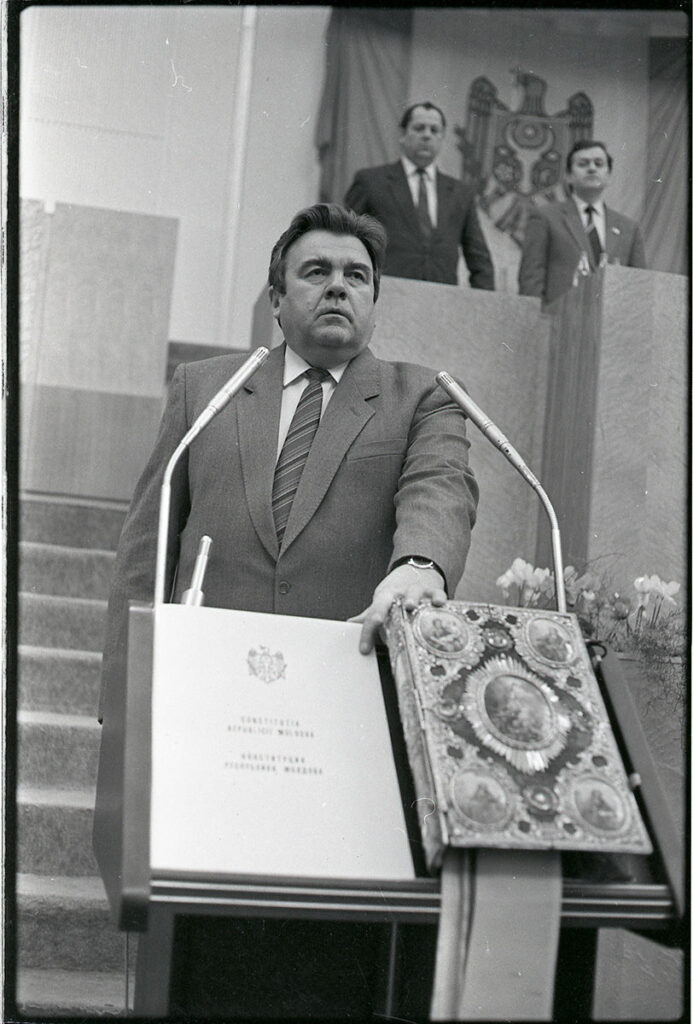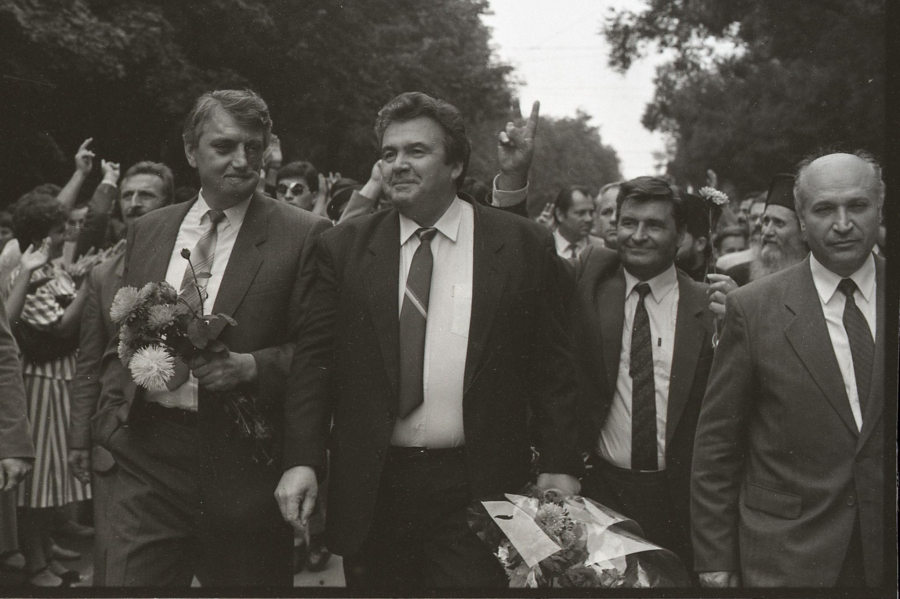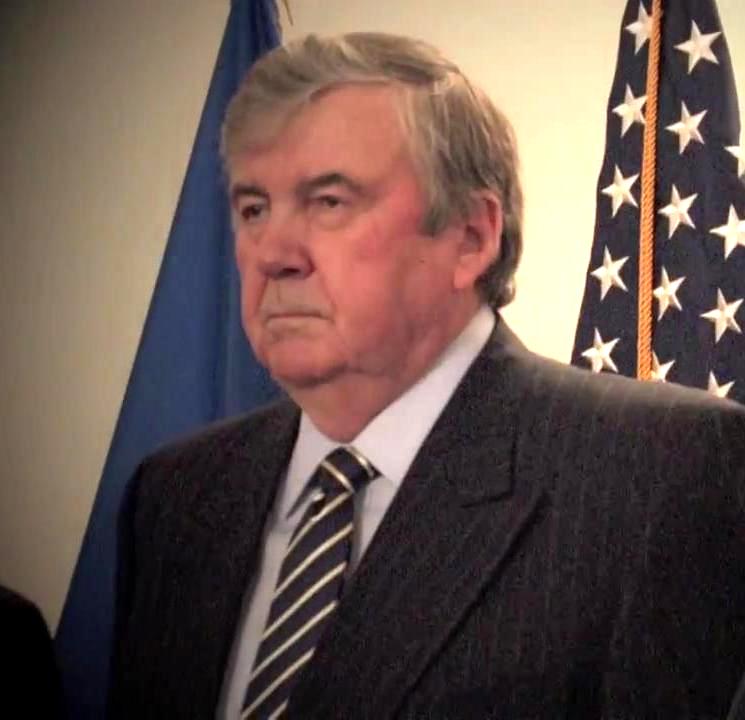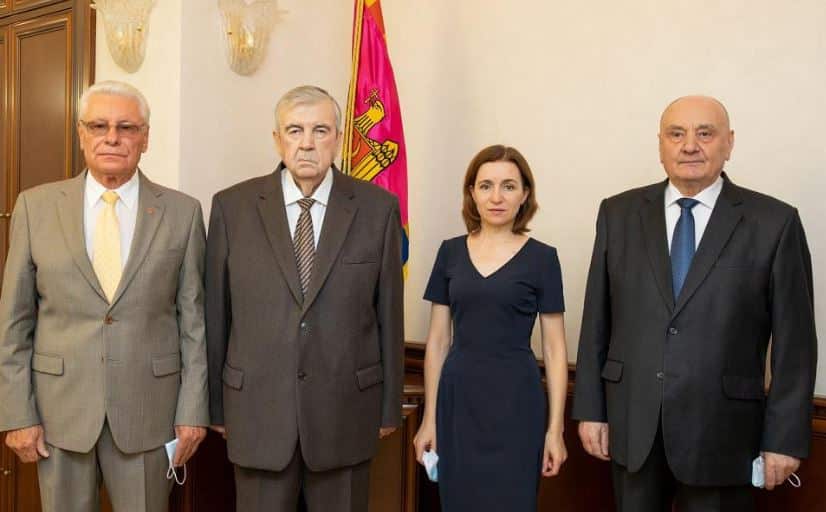Mircea Snegur, passed away on Wednesday, September 13th, at the age of 83. Mircea Snegur served as Moldova’s first president from 1990 to 1997. He was a key proponent of the legislation that granted the Romanian language official status and the return to the tricolor flag. He supported the proclamation of sovereignty, and the achievement of Moldova’s independence, and played a significant role in gaining recognition for the young state by Western nations.
Early Life
He was the first of six children born to the farming family of Ana (née Palamari) and Ion Snegur, entering the world on January 17, 1940. After completing seven grades at the local school, he graduated from the secondary school in the neighboring village of Frumușica in 1956. In 1961, after his studies at the Agricultural Institute in Chișinău, he obtained a degree as an agronomist-scientist. In 1972, he pursued doctoral studies at the Department of Crop Science at the same institution, earning a doctoral degree in agriculture and serving as a senior scientific collaborator.
Between 1961 and 1969, he worked as an agronomist and the president of an agricultural household in the village of Lunga, Florești district. Later, he held positions as the director of the Experimental Station for Field Crops of the Agricultural Institute (1968-1973), head of the Main Department of Crop Science, and subsequently, the Main Department of Agricultural Science at the Ministry of Agriculture (1973-1978), the general director of the Scientific Production Association “Selecția,” and the director of the Institute of Scientific Research in Field Crops in Bălți (1978-1981).
Political Life

From 1981 to 1985, he served as the First Secretary of the Edineț District Committee of the Communist Party of Moldova (PCM). Later, until 1989, he was the Secretary of the Central Committee of the PCM responsible for agricultural matters.
From 1989 to 1990, he served as the President of the Supreme Soviet of the Soviet Socialist Republic of Moldova (PSSM). From September 3, 1990, until January 15, 1997, he held the position of the President of the Republic of Moldova (elected by the Parliament from September 3, 1990, to December 8, 1991; elected by the people from December 8, 1991, to January 15, 1997).
On March 26, 1989, he became a deputy of the Supreme Soviet of the USSR, serving as a deputy of the Supreme Soviet of the Moldavian Soviet Socialist Republic (RSSM) in the XI and XII legislatures. Later, he became a deputy in the Parliament of the Republic of Moldova during the XIV legislature (elected in 1998), the leader of the Democratic Convention of Moldova (1997), and the President of the Democracy and Reforms Alliance (1998).
In 1995, he founded the Party of Rebirth and Conciliation of Moldova, of which he was the president until 2002 when the well-organized structure formed the basis for creating the Liberal Party.

He was decorated with the Order of the Republic (2000), the “Insignia of Honor” (1960), and the “For Distinguished Labor” medal (1976). He also held the Diploma of Honor of the European Order of Merit and the Gold Medal (1995), and the “AD Honoris” Diploma of the European Academy of Arts (1995). He received eight honorary doctorate titles from the following institutions: the Agricultural University of Moldova, the University of Ankara (Turkey), the International Free University of Moldova, the State University of Comrat, the Academy of Sciences of Moldova, the Public Administration Academy of Moldova, the Cooperative-Commercial University of Moldova, and the Technical University of Moldova.
His tenure as the head of state was a crucial period for the fate of the Republic of Moldova. He wholeheartedly embraced the slogans of the active phase of the national liberation movement and worked tirelessly to implement them. His name is associated with the establishment of the state language and Latin script, the beginning of multi-party politics, the declaration of sovereignty and independence, the rejection of Soviet imperial tendencies, the admission of the country to the United Nations, and the peaceful resolution of the armed conflict in Transnistria.

FOR THE MOST IMPORTANT NEWS, FOLLOW US ON TWITTER!
From the outset, he committed to the Universal Declaration of Human Rights and other international legal instruments, which propelled the promotion of a policy of democratization and the transition to a market-based economy, thus initiating the integration of the young state into the global community. This period saw the signing of the Partnership and Cooperation Agreement with the European Union and admission to the Council of Europe (the first CIS state), as well as the conclusion of a cooperation agreement with NATO. Moldova became a member of the OSCE, major international financial organizations, and other important global, European, and regional bodies, establishing diplomatic, political, economic, scientific, cultural, and sporting relations not only bilaterally but also multilaterally with the majority of the world’s countries.
For these purposes, the first President conducted official visits to Romania, the United States, Germany, the United Kingdom, France, Canada, Belgium, Austria, China, India, Turkey, Bulgaria, Hungary, Poland, the Russian Federation, Ukraine, Lithuania, Estonia, Belarus, Kazakhstan, Kyrgyzstan, and Turkmenistan, hosting several heads of state and significant delegations.

On the domestic front, the foundations of the rule of law were established through the adoption of the Constitution and the adjustment of the legislative framework to international law standards. The main institutions and attributes for the functioning and democratic development of the state were created. Continuous efforts were made to revive the ancestral faith and promote science, education, media, culture, and sports.
At the end of his presidential term, Snegur, the Council of Europe, the World Bank, and other international organizations presented the Republic of Moldova as a model of post-communist economic and political reforms. However, after the change of power following the presidential elections in 1996, the situation gradually deteriorated, leading to an eight-year communist rule. Subsequently, the increased opposition, even by him, mimicked reforms to satisfy obscure group interests, compromising the European path of the Republic of Moldova initially established during his presidency.

Life after Politics
After leaving the political arena, Mircea Snegur remained active in the social and media spheres, dedicating himself primarily to writing. He edited nine volumes (out of a planned ten) of memoirs titled “Labirintul Destinului” (The Labyrinth of Destiny), which serve as a faithful chronicle of our recent history. Within their pages, readers discover not only the truth about the turbulent period of the Republic of Moldova’s formation but also clear evidence that Mircea Snegur never ceased his role as the first President, working with fidelity and devotion to realize the nation’s ideals.
The Snegur family raised two diplomats: their son, Vitalie, worked in UN structures, and their daughter, Natalia (Gherman), served as an ambassador, Minister of Foreign Affairs and European Integration, and was a candidate for the position of Secretary-General of the United Nations in 2016. Currently, she is the Special Representative of the Secretary-General for Central Asia and the Head of the Regional Centre for Preventive Diplomacy for Central Asia.
Excerpt from the Encyclopedia “Localities of the Republic of Moldova, Documentary-Publicistic Illustrated Itinerary, Vol. 14 To-Va”
Author: Dumitru Țâra, the first spokesperson of Mircea Snegur

